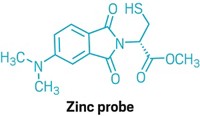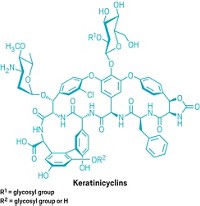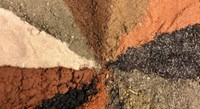Advertisement
Grab your lab coat. Let's get started
Welcome!
Welcome!
Create an account below to get 6 C&EN articles per month, receive newsletters and more - all free.
It seems this is your first time logging in online. Please enter the following information to continue.
As an ACS member you automatically get access to this site. All we need is few more details to create your reading experience.
Not you? Sign in with a different account.
Not you? Sign in with a different account.
ERROR 1
ERROR 1
ERROR 2
ERROR 2
ERROR 2
ERROR 2
ERROR 2
Password and Confirm password must match.
If you have an ACS member number, please enter it here so we can link this account to your membership. (optional)
ERROR 2
ACS values your privacy. By submitting your information, you are gaining access to C&EN and subscribing to our weekly newsletter. We use the information you provide to make your reading experience better, and we will never sell your data to third party members.
Biochemistry
Reactions: The amazing lanthanome, crediting authors, and Paxlovid’s beginnings
March 6, 2022
| A version of this story appeared in
Volume 100, Issue 9
Letters to the editor
The lanthanome
I read with great interest the excellent and fascinating article in the Feb. 7, 2022, issue of C&EN by Mark Peplow, “Unlocking the Lanthanome” (page 22). I would like to add the complementary side of this lanthanide story here, the knowledge of which may or may not have led to the search for the organism described in the article. While at New Mexico State University just over 50 years ago, faculty colleagues of mine, Dennis Darnall (deceased) and Edward Birnbaum, demonstrated restoring catalytic activity to calcium-dependent enzymes upon removing the calcium ions and replacing them with lanthanide ions. They showed, for example, the reactivation of α-amylase of Bacillus subtilis with a number of lanthanide ions (Biochemistry 1973, DOI: 10.1021/bi00742a021). They were the first group or among the first to report such experiments.
Many years later, members of my group described the presence of a calmodulin in Bacillus subtilis, a spore-forming bacterial species; unfortunately, we never tried substituting lanthanide ions for the calcium ions. Reflecting on this earlier work, however, has made me wonder if any of the lanthanome researchers have screened the environment for an acidophilic Bacillus species. The spores formed by this genus accumulate very large amounts of calcium ions when they are induced to sporulate. Such spores might prove to be a good way to accumulate lanthanide ions, should some Bacillus species have evolved to use lanthanide ions in place of calcium ions to form their spores. I must confess that the lanthanome world reported by Peplow still seems a bit like a space fantasy to me—amazing!
Jim Hageman
Mount Pleasant, Michigan
Molecular magnet
Thank you for the article “Record-Breaking Molecular Magnet,” including the beautifully simple structure of one of the new compounds, in the Jan. 24, 2022, issue of C&EN (page 6). Two comments in the article call the work a “very, very, important . . . milestone” and a “spectacular result.” I agree. It would have been appropriate if the person who conceived and synthesized the new class of compounds had been named in the article. The publication in Science (2022, DOI: 10.1126/science.abl5470) states that the co–lead author K. Randall McClain “proposed the molecular design as a high-temperature single-molecule magnet target, synthesized all compounds, and collected single-crystal x-ray diffraction data.” The co–lead author Colin A. Gould (C. A. G.) “refined x-ray diffraction data and performed magnetic characterization” and had a large role in drafting the paper: “C.A.G., N.F.C., and J.R.L. wrote the manuscript.” Most articles describing high-level research results are careful to delineate the contributions of different organizations and authors involved in the work. Obviously, it might be cumbersome to expand on the role of every author, particularly when there are multiple institutions and more than 10 authors. However, in this case, at a minimum, it seems reasonable to highlight the contributions of the two co–lead authors in addition to the three senior authors who were named. Please give credit where credit is due in citing an important new discovery.
Daniel C. Harris
China Lake, California
Paxlovid
Your recent article “The Path to Paxlovid” (Jan. 24, 2022, page 16) is a testament to the power of science, chemistry, and the pharmaceutical industry in responding to society’s health crises such as COVID-19. This is chemistry, drug design, and teamwork at their very best. A critical part of this story was omitted and relates to the underpinning science and discoveries made at Agouron Pharmaceuticals in San Diego as part of its rhinovirus 3C protease program to address the common cold (see Antimicrob. Agents Chemother. 2005, DOI: 10.1128/aac.49.6.2267-2275.2005 and “In Vitro Antiviral Activity of Human Rhinovirus 3C Protease Inhibitors against the SARS Coronavirus” and references cited therein). Beyond the extensive amount of crystallographic data surrounding the design of these series, the optimized substituents are unmistakable when compared with that of Paxlovid (especially the P1 lactam glutamine replacement). We applaud the Pfizer team for its heroic effort to provide a viable oral agent to COVID-19 patients impacted by SARS-CoV-2. We also want to provide readers a fuller picture of the story and the critical early rhinovirus 3C protease research that underpinned it. It reminds us all as scientists that chemistry, biology, and drug discovery are absolutely a team sport and that new advances can sometimes have significant impacts beyond their original contexts.
Siegfried Reich, David Matthews, Peter Dragovich, Amy Patick, and George Smith
San Diego





Join the conversation
Contact the reporter
Submit a Letter to the Editor for publication
Engage with us on Twitter